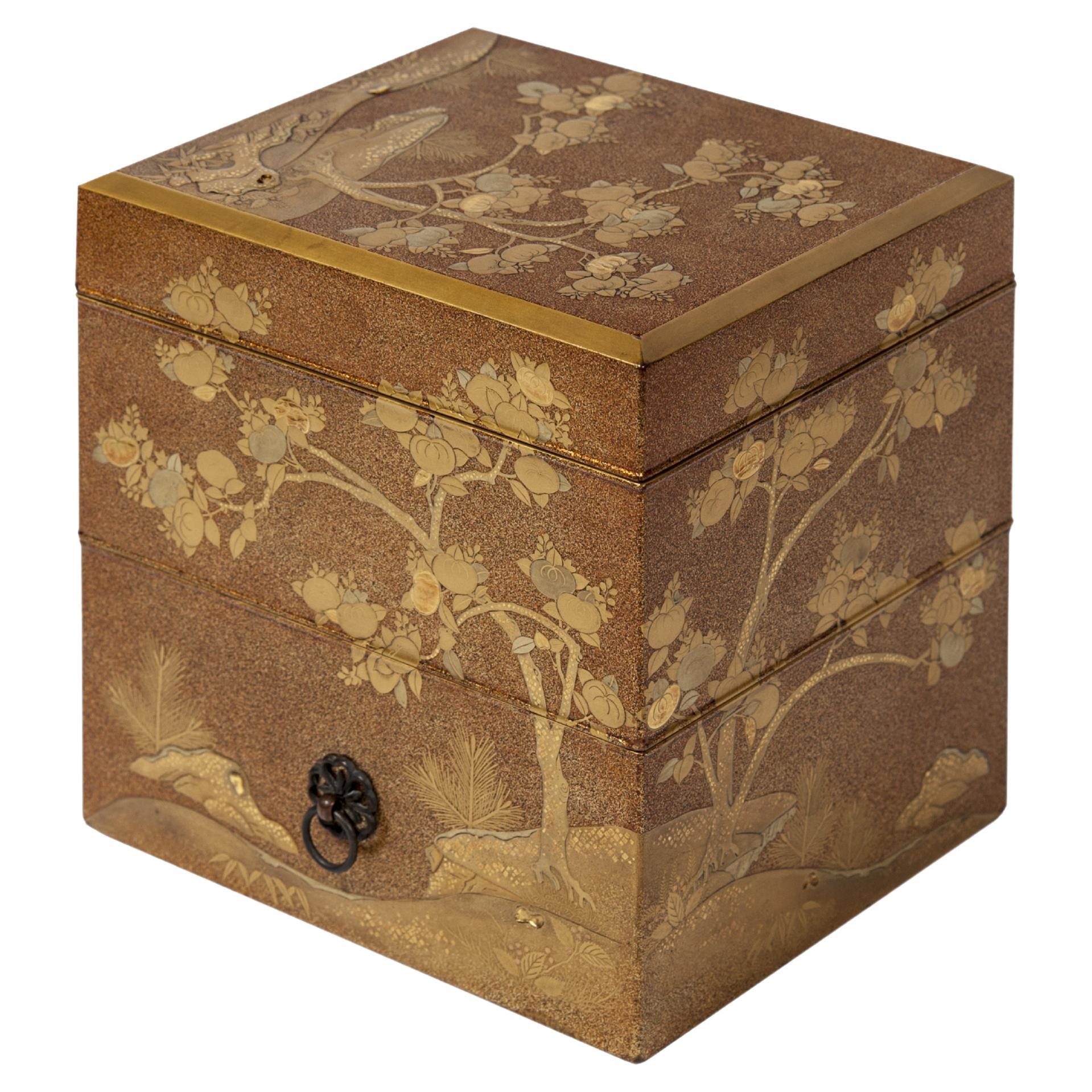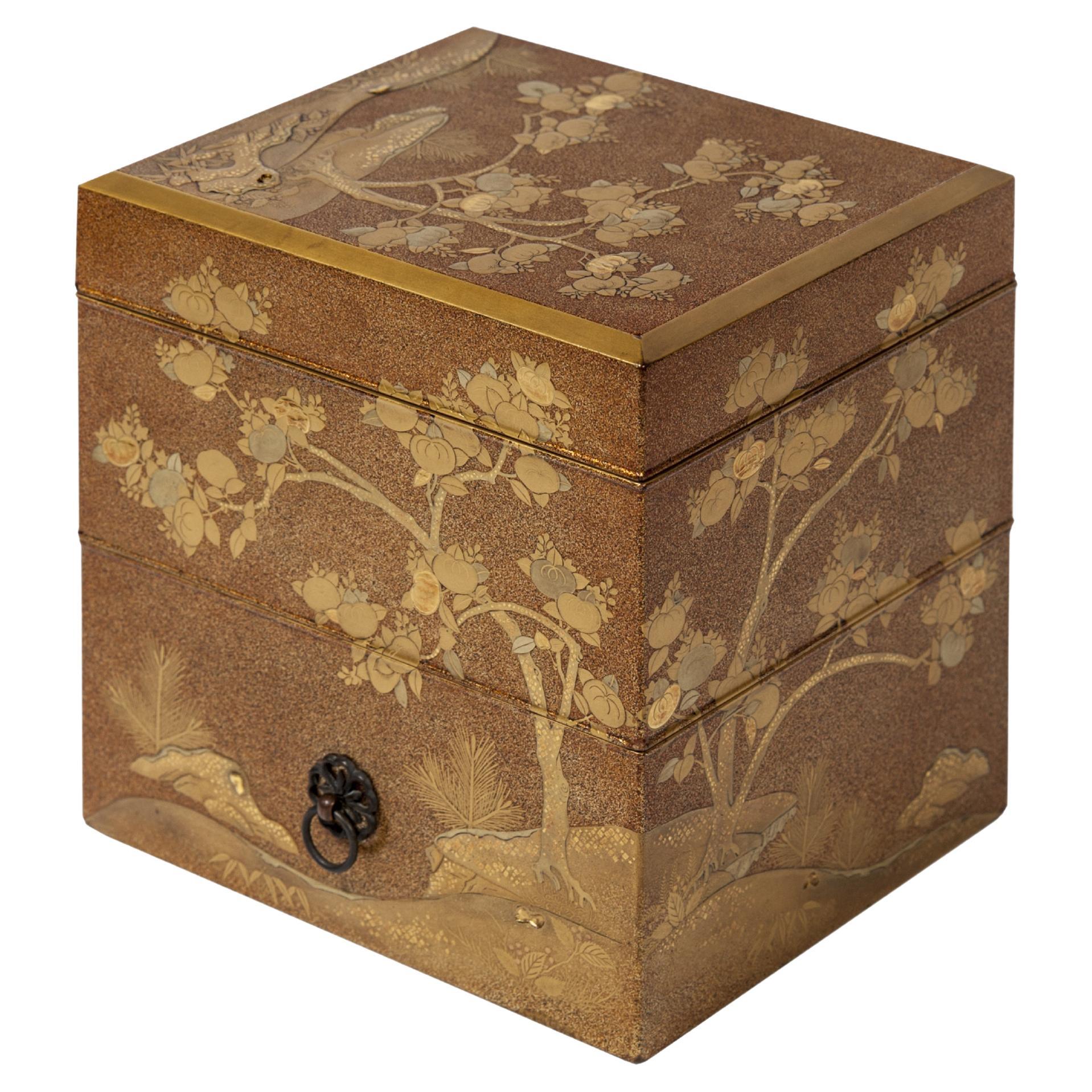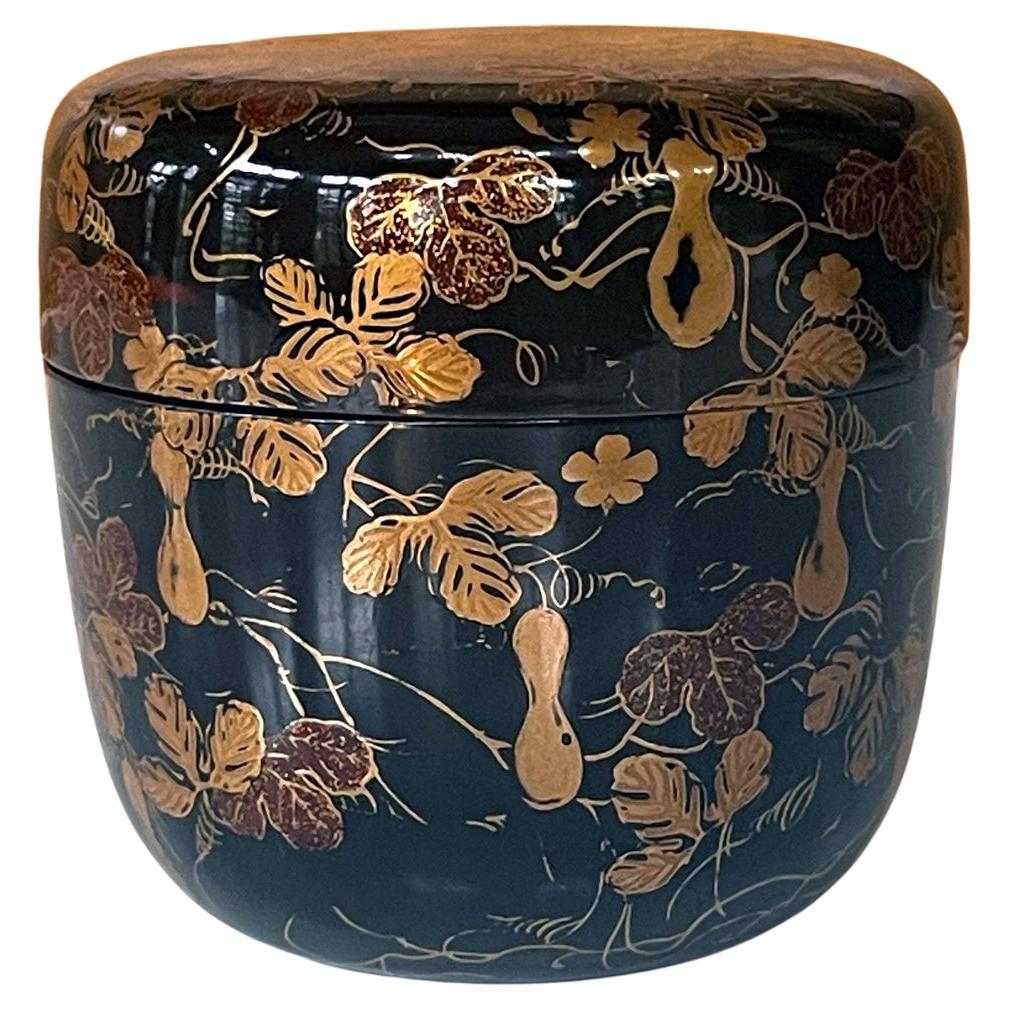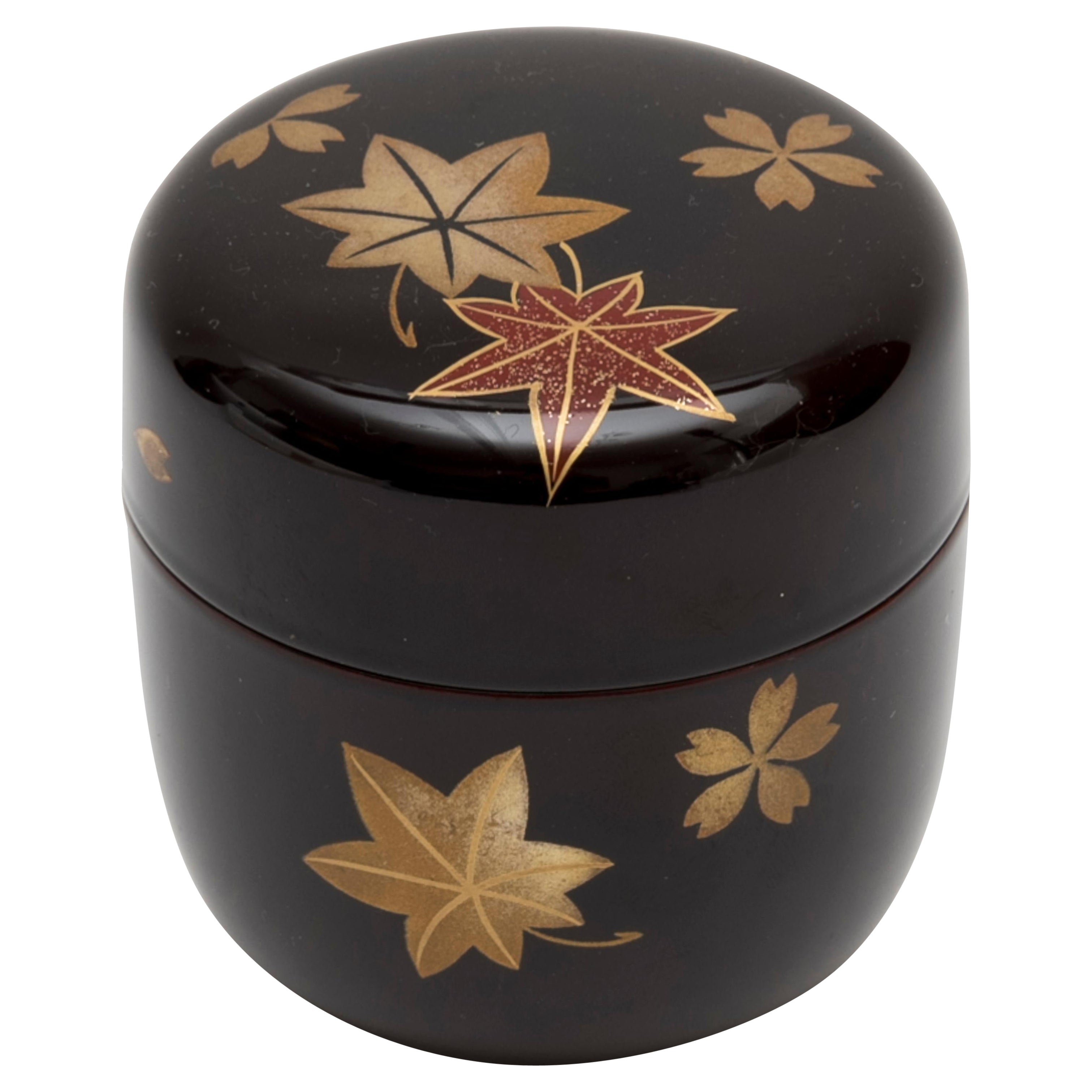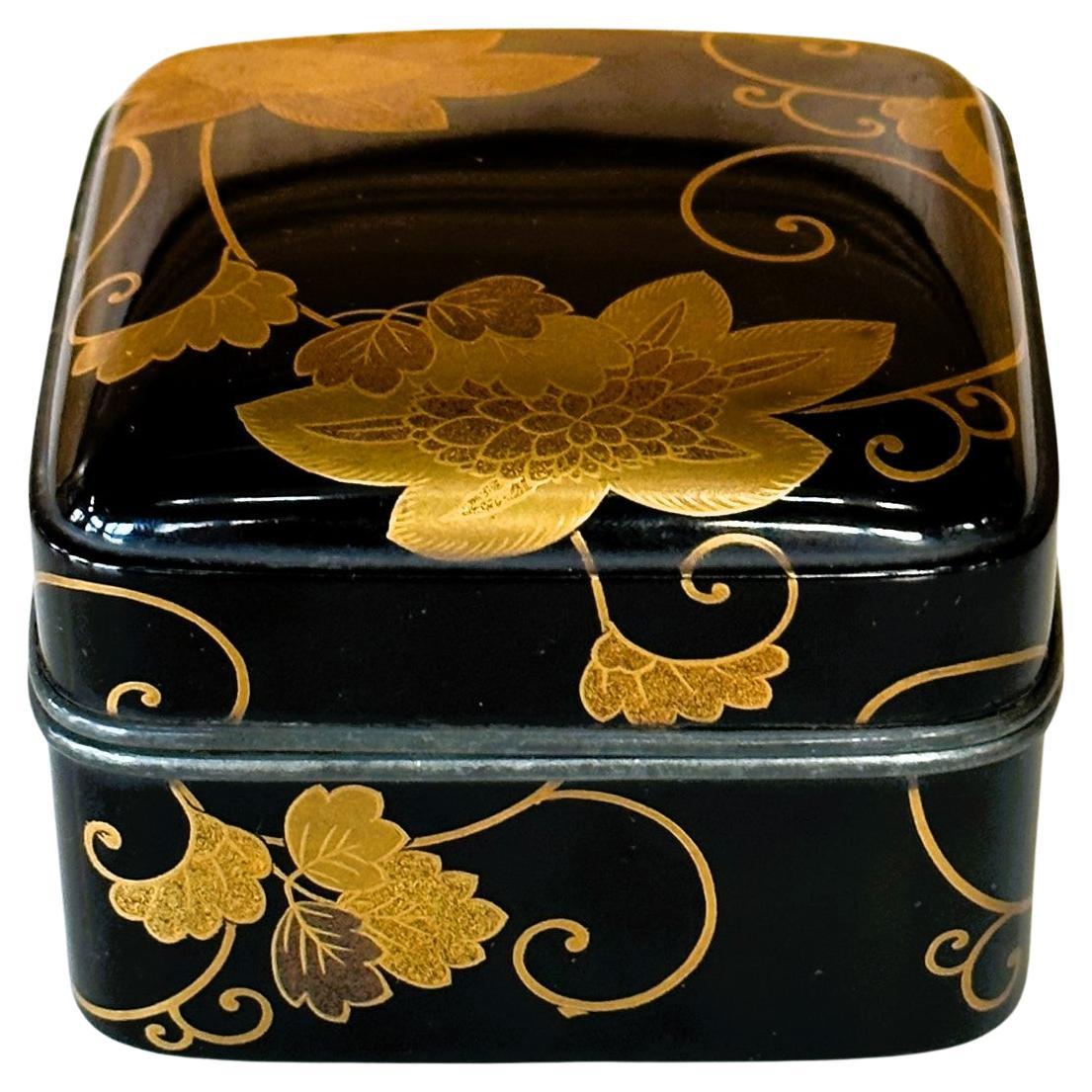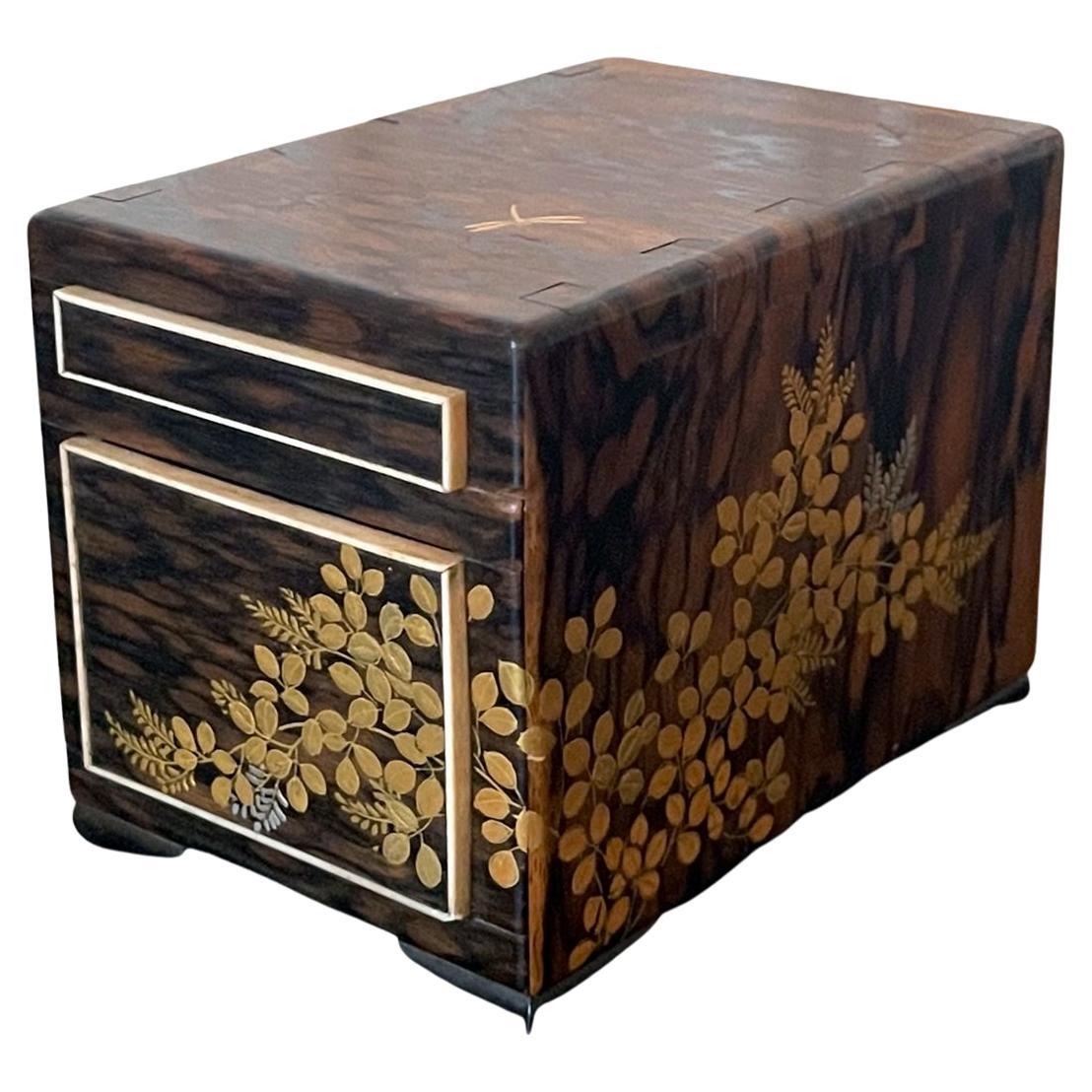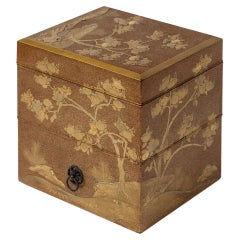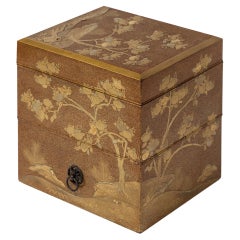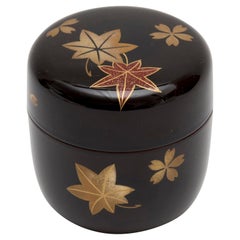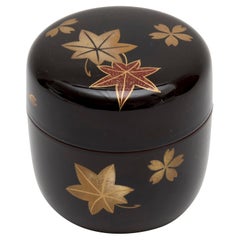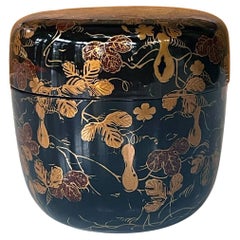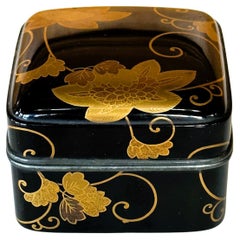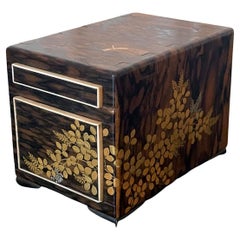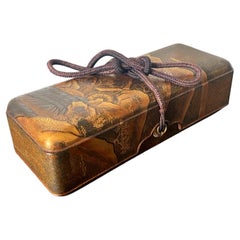Items Similar to Japanese lacquered Cherry Tree Kobako
Want more images or videos?
Request additional images or videos from the seller
1 of 7
Japanese lacquered Cherry Tree Kobako
$2,630.35
£1,947.26
€2,200
CA$3,639.75
A$4,012.74
CHF 2,099.34
MX$49,228.92
NOK 26,426.51
SEK 24,712.97
DKK 16,758.25
About the Item
Kobako in nashiji lacquer of square shape with a hira maki-e décor of a blossoming
cherry tree. Both of the four sides are adorned with golden lacquer cherry flowers,
represented in both profile and seen from above. The inside is made of hirame lacquer,
and the outline is circled with shibuchi.
Japan – Ere Edo (1603-1868) – XIX ème siècle
- Dimensions:Height: 2.17 in (5.5 cm)Width: 3.04 in (7.7 cm)Depth: 3.04 in (7.7 cm)
- Materials and Techniques:Lacquer,Lacquered
- Place of Origin:
- Period:
- Date of Manufacture:1603-1868Unknown
- Condition:Wear consistent with age and use.
- Seller Location:PARIS, FR
- Reference Number:Seller: 2024-12931stDibs: LU8311242492282
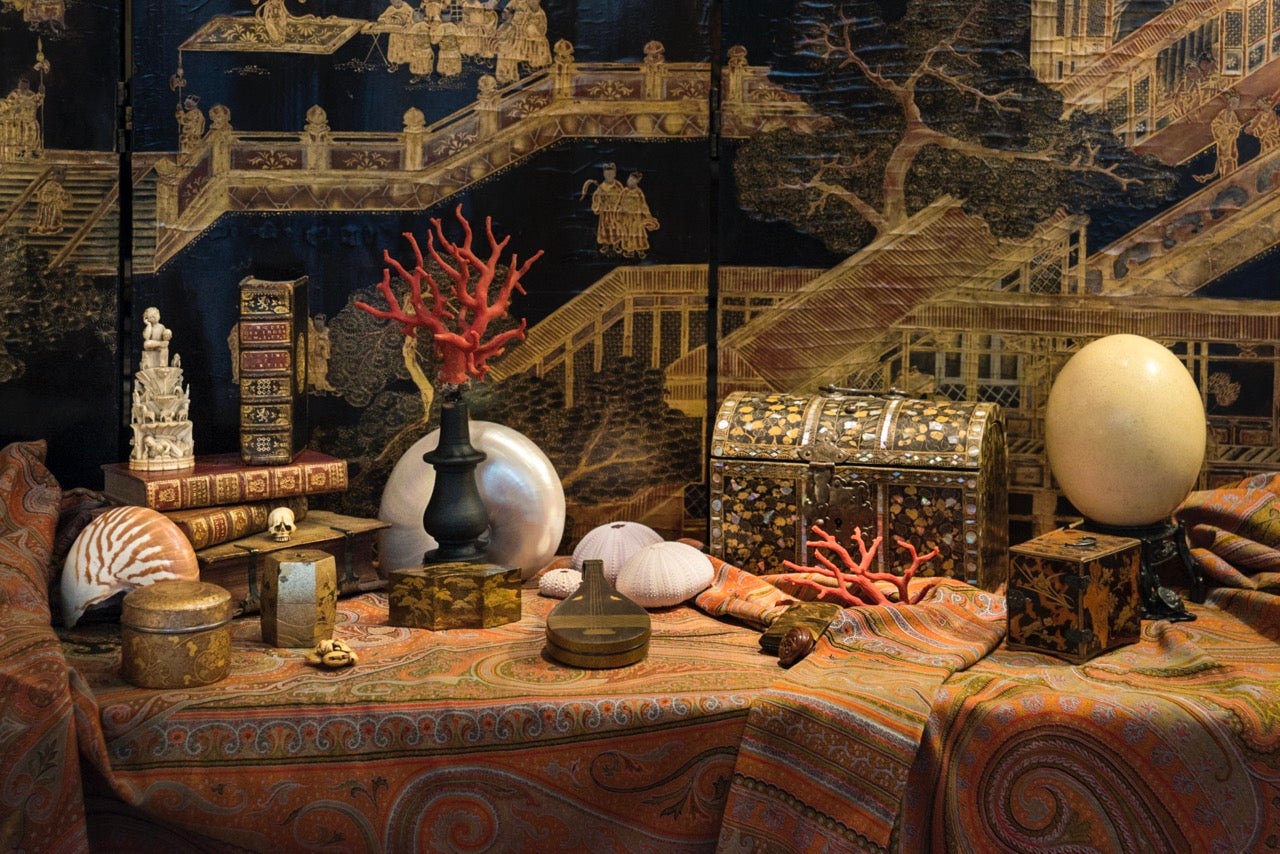
About the Seller
No Reviews Yet
Vetted Professional Seller
Every seller passes strict standards for authenticity and reliability
Established in 2013
1stDibs seller since 2023
- ShippingRetrieving quote...Shipping from: PARIS, France
- Return Policy
Authenticity Guarantee
In the unlikely event there’s an issue with an item’s authenticity, contact us within 1 year for a full refund. DetailsMoney-Back Guarantee
If your item is not as described, is damaged in transit, or does not arrive, contact us within 7 days for a full refund. Details24-Hour Cancellation
You have a 24-hour grace period in which to reconsider your purchase, with no questions asked.Vetted Professional Sellers
Our world-class sellers must adhere to strict standards for service and quality, maintaining the integrity of our listings.Price-Match Guarantee
If you find that a seller listed the same item for a lower price elsewhere, we’ll match it.Trusted Global Delivery
Our best-in-class carrier network provides specialized shipping options worldwide, including custom delivery.More From This Seller
View AllJapanese Lacquered Tebako 'Box'
Located in PARIS, FR
Tebako box with three compartments in golden and nashi-ji lacquer, decorated with golden, red, and kirigane lacquer, golden persimmon tree leaves, among rocks. The compartments are of increasing size from the top. The decoration is in continuity.
Persimmon has been cultivated in southern China for more than 2500 years and is believed to have been introduced to Japan in the 8th century. The veneer is a tree with very hard wood, similar to ebony. According to a legend, one specimen survived the atomic bombing of Nagasaki on August 9, 1945, close to the epicenter. It is therefore in Japan a symbol of strength and longevity. It is also the national fruit of the country. It is eaten as a traditional dish during New Year's Day celebrations.
Tebako literally means "portable box...
Category
Antique 1860s Japanese Lacquer
Materials
Lacquer
Japanese Tebako in Nashiji lacquer adorned with golden Persimon flowers
Located in PARIS, FR
Tebako box with two compartments in golden and nashi-ji lacquer, decorated with golden, red, and kirigane lacquer, golden persimmon tree leaves, among rocks. The compartments are of ...
Category
Antique Early 19th Century Japanese Meiji Lacquer
Materials
Gold
Japanese Lacquered Natsume 'Tea Box'
Located in PARIS, FR
Natsume in dark red lacquer, decorated with autumn leaves and cherry blossoms in hiramaki-e and nashiji. Interior in black lacquer.
Maple leaves (Momiji) are celebrated in literatur...
Category
Mid-20th Century Japanese Lacquer
Materials
Lacquer
Japanese Natsume or tea box adorned with mapple leaves and sakure flowers
Located in PARIS, FR
Natsume in dark red lacquer, decorated with autumn leaves and cherry blossoms in hiramaki-e and nashiji. Interior in black lacquer.
Maple leaves (Momiji) are celebrated in literature...
Category
Early 20th Century Japanese Taisho Lacquer
Materials
Gold
Japanese suzuribako lacquered box peony river
Located in PARIS, FR
Suzuribako box (empty) in black lacquer. Gold maki-e decoration of a river bordered by peonies, one with red highlights. The edges of the lid are in gold lacquer. Nashi-ji interior.
Category
Antique Late 19th Century Japanese Lacquer
Materials
Gold
Japanese golden kobako flowers Edo period 18th century
Located in PARIS, FR
Quadrangular kobako box decorated with flowers in gold and blue lacquer with aogai inlay. Lid and sides in fundame lacquer, underside and interio...
Category
Antique 18th Century Japanese Japonisme Lacquer
Materials
Gold
You May Also Like
Japanese Lacquered Maki-E Natsume in Kodaiji Style
Located in Atlanta, GA
A Japanese lacquered tea caddy (known as Natsume) with fine Maki-e decoration circa 18-19th century Edo to Meiji period. The large-sized nat...
Category
Antique 19th Century Japanese Meiji Lacquer
Materials
Wood, Lacquer
Antique Japanese Lacquered Incense Box Kobako in Kodaiji Style
Located in Atlanta, GA
An antique lacquered small box that was likely used to contain incense powder (it is called Kobako in Japanese), circa early to mid-19th century of the Edo...
Category
Antique 19th Century Japanese Edo Lacquer
Materials
Wood, Lacquer
Fine Miniature Japanese Kodansu with Lacquer Inlays
Located in Atlanta, GA
A fine Japanese miniature kodansu constructed from Kaki wood (Persimmon) circa 19th century, late Meiji period. With its expressive exotic wood grains and exposed tenon construction,...
Category
Antique Late 19th Century Japanese Meiji Lacquer
Materials
Wood
Japanese Lacquered Maki-e Fubako Edo Period
Located in Atlanta, GA
A Japanese lacquered wood fubako (a box used to store document or small scroll painting), circa second half of 19th century late Edo period. The rectangular box features an unusually deep lipped lid with slightly rounded corners, a conforming lower box that is almost entirely covered by the lid which has two bronze medallion rings with tasseled...
Category
Antique 19th Century Japanese Edo Lacquer
Materials
Wood, Lacquer
Exquisite Japanese Lacquer Maki-e Hand Box Kobako Edo Period
Located in Atlanta, GA
An early Japanese lacquer Maki-e decorated kobako (small storage box) circa 18th century (Edo period). Based on its form and size, this kobako was possibly used as a Chabako to store the accoutrements for chado (tea ceremony). The lidded box is of rectangular form with bevel design on all edge that softens the appearance. The entire surface was densely covered with a background of nashiji. Elaborate Maki-e techniques were used on each side to showcase a distinct landscape or floral design within a cartouche panel. On the surface of the lid, a mountainous landscape rises from the edge of the water. The poetic composition is akin to a traditional ink scroll...
Category
Antique 18th Century Japanese Edo Lacquer
Materials
Lacquer
Japanese Edo Period Lacquer and Mother-of-Pearl Embellished Stoneware Koro
Located in Austin, TX
A highly unusual Japanese crackle glazed koro (incense burner or censer), lacquered and inlaid with mother-of-pearl embellishment, signed Gyokusen, Ed...
Category
Antique 19th Century Japanese Edo Scholar's Objects
Materials
Copper
More Ways To Browse
Japanese Art Trees
Japan Art Cherry
Japanese Cherry Tree
Cherry Blossom Trees
Antique Japanese Lacquer Kobako
Japanese Black Lacquer Tray
Chinese Cinnabar
Antique Japanese Tray
Japanese Pearl Inlay
Japanese Document Boxes
Vintage Lacquer
Asian Black Lacquer Pearl Furniture
Chinese Cinnabar Furniture
Large Japanese Lacquer Box
Carved Cinnabar
Cinnabar Lacquer Furniture
Meiji Japan Tray
Antique Chinese Cinnabar
